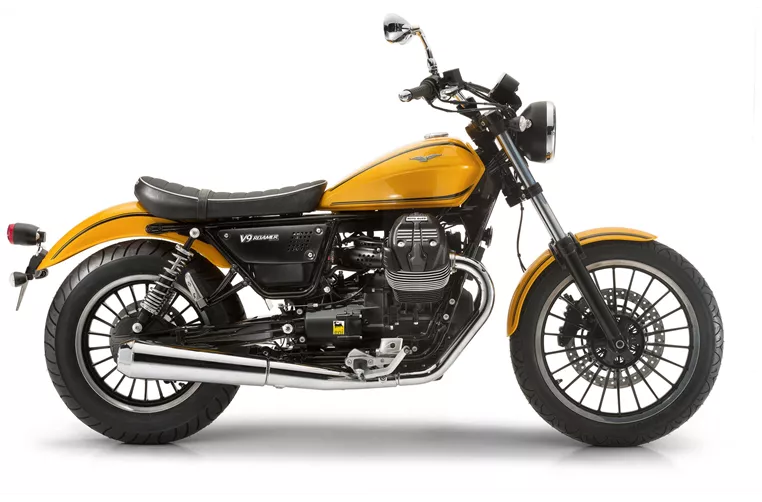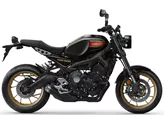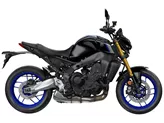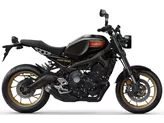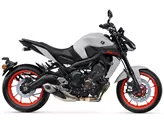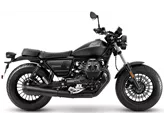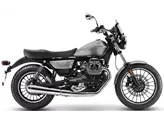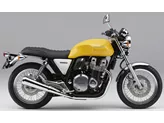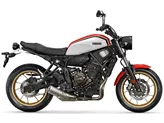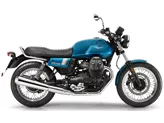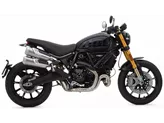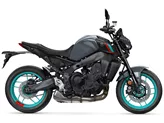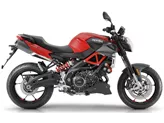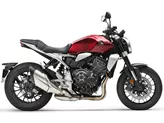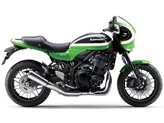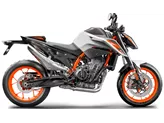Yamaha XSR900 2018 vs. Moto Guzzi V9 Roamer 2016

Yamaha XSR900 2018

Moto Guzzi V9 Roamer 2016
Overview - Yamaha XSR900 2018 vs Moto Guzzi V9 Roamer 2016
The Yamaha XSR900 2018 and the Moto Guzzi V9 Roamer 2016 are both naked bikes with their own unique features and strengths.
Starting with the Yamaha XSR900 2018, it is equipped with a powerful in-line engine that produces 115 horsepower and 87.5 Nm of torque. With its three cylinders and liquid cooling system, it offers a high-performance riding experience. The suspension system consists of an upside-down telescopic fork at the front and a swing arm with a monoshock at the rear, providing stability and control. The frame is made of aluminum and has a twin tube design, ensuring durability and strength. The braking system includes double disk brakes at the front with a diameter of 298 mm, offering excellent stopping power. Additionally, it features advanced rider assistance systems such as ABS for enhanced safety. The dimensions and weights of the XSR900 include a front tire width of 120 mm and a diameter of 17 inches, a rear tire width of 180 mm and a diameter of 17 inches, a wheelbase of 1440 mm, a seat height of 815 mm, a kerb weight of 191 kg (with ABS), and a fuel tank capacity of 14 liters.

Yamaha XSR900 2018
On the other hand, the Moto Guzzi V9 Roamer 2016 has a V-type engine with 55 horsepower and 62 Nm of torque. With its two cylinders and oil-air cooling system, it offers a comfortable and smooth ride. The suspension system consists of a telescopic fork at the front and a swing arm with a monoshock at the rear, providing a comfortable and stable ride. The frame is made of steel and has a double cradle design, ensuring stability and durability. The braking system includes a single disk brake at the front with a diameter of 320 mm, offering reliable stopping power. In addition to ABS, the V9 Roamer also features traction control for added safety. The dimensions and weights of the V9 Roamer include a front tire width of 100 mm and a diameter of 19 inches, a rear tire width of 150 mm and a diameter of 16 inches, a wheelbase of 1480 mm, a seat height of 775 mm, a kerb weight of 200 kg (with ABS), and a fuel tank capacity of 15 liters.
In terms of strengths, the Yamaha XSR900 2018 stands out with its extremely sporty and rev-happy engine, excellent brakes, and a riding experience that matches the level of a naked bike. It also offers a pleasant seating position, high-quality workmanship, and a good price-performance ratio. On the other hand, the Moto Guzzi V9 Roamer 2016 excels in terms of its comfortable chassis, comfortable seating position, stable brakes, and attractive design.

Moto Guzzi V9 Roamer 2016
However, the Yamaha XSR900 2018 does have some weaknesses, such as an almost too direct response from the engine and a retro style that may not be thought through to the last detail. On the other hand, the Moto Guzzi V9 Roamer 2016 could benefit from a slightly stronger engine.
In conclusion, both the Yamaha XSR900 2018 and the Moto Guzzi V9 Roamer 2016 offer their own unique features and strengths. The XSR900 provides a more sporty and performance-oriented riding experience, while the V9 Roamer offers a comfortable and stylish option. Ultimately, the choice between the two will depend on the rider's preferences and priorities.
Technical Specifications Yamaha XSR900 2018 compared to Moto Guzzi V9 Roamer 2016
Pros and Cons in comparison
Pros and Cons in comparison
Yamaha XSR900 2018

The Yamaha XSR900 is a classic optical illusion - with its round headlight, angular tank and attached tail light, it clearly passes for a retro bike. But it's no coincidence that the performance is reminiscent of the potent mid-range naked bike Yamaha MT-09, which is the extremely sporty basis for the XSR900. So the engine is a blast and the brakes are appropriately venomous. Fortunately, the engineers didn't overdo it with the chassis, the XSR900 offers sufficient comfort and the upright riding position is more comfortable than the powerful engine would lead one to expect. All in all, the XSR900 is one of the sportiest models among the retro bikes.
Moto Guzzi V9 Roamer 2016
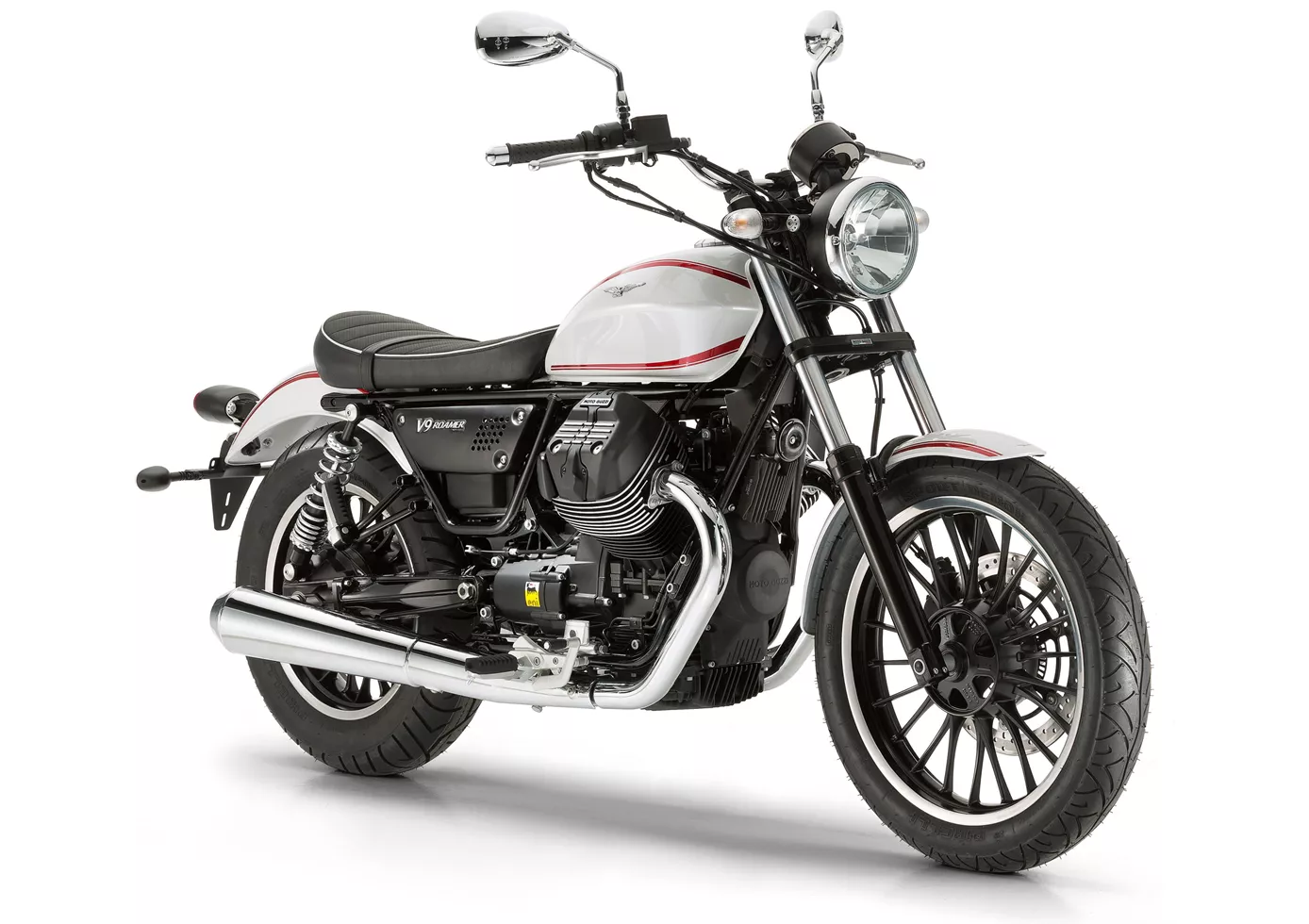
The V9 Roamer (masculine, means wanderer, vagabond) has a legacy to take up in contrast to the V9 Bobber - it replaces the Moto Guzzi Nevada 750. This makes it clear that the Roamer should also work on longer distances. Accordingly, the seating position is cosy, the high handlebars, the pleasant knee angle and the comfortable saddle provide a distinctly feel-good atmosphere. Thanks to its low weight of only 200 kilos, the Roamer also has more agile handling than you would expect from a cruiser. However, the typical V2 engine with its 55 hp is more for cruising than for sport.
Price Comparison Avarage Market Price Yamaha XSR900 vs Moto Guzzi V9 Roamer
There are a few key differences between a Yamaha XSR900 2018 and a Moto Guzzi V9 Roamer 2016. There are the same number of bikes of both models available on the 1000PS.de marketplace, specifically 4. It takes less time to sell a Yamaha XSR900 with 123 days compared to 144 days for a Moto Guzzi V9 Roamer. Since model year 2016 1000PS.de editors have written 30 reviews for the Yamaha XSR900 and 5 reviews for the Moto Guzzi V9 Roamer since model year 2016. The first review for the Yamaha XSR900 was published on 11/25/2015 and now has more than 17,600 views. This compares to more than 37,200 views for the first review on Moto Guzzi V9 Roamer published on 3/17/2016.

